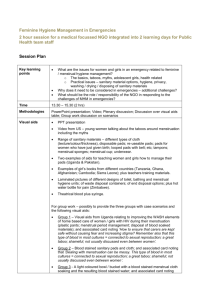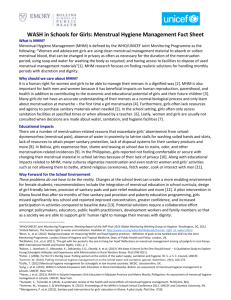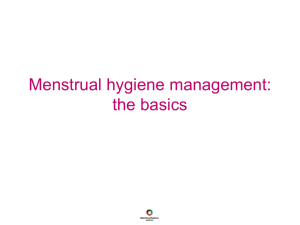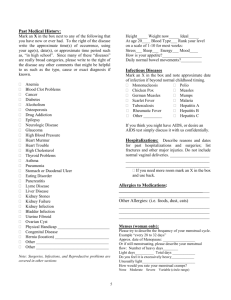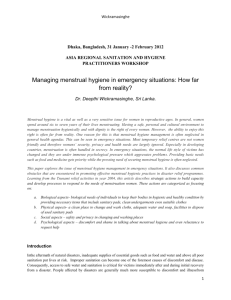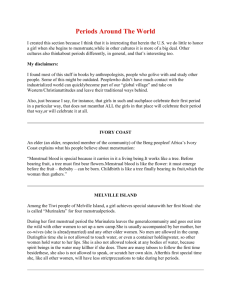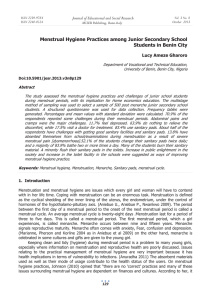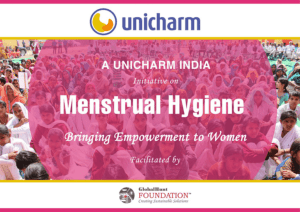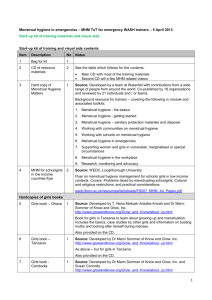Menstrualhygiene_26022013
advertisement
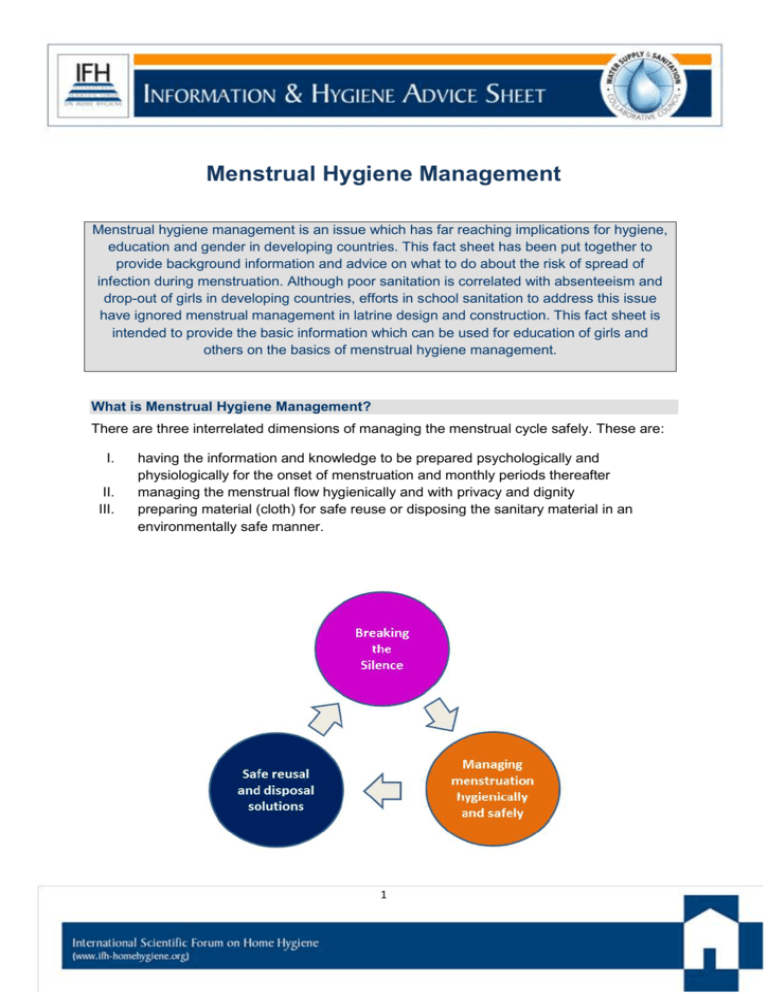
Menstrual Hygiene Management Menstrual hygiene management is an issue which has far reaching implications for hygiene, education and gender in developing countries. This fact sheet has been put together to provide background information and advice on what to do about the risk of spread of infection during menstruation. Although poor sanitation is correlated with absenteeism and drop-out of girls in developing countries, efforts in school sanitation to address this issue have ignored menstrual management in latrine design and construction. This fact sheet is intended to provide the basic information which can be used for education of girls and others on the basics of menstrual hygiene management. What is Menstrual Hygiene Management? There are three interrelated dimensions of managing the menstrual cycle safely. These are: I. II. III. having the information and knowledge to be prepared psychologically and physiologically for the onset of menstruation and monthly periods thereafter managing the menstrual flow hygienically and with privacy and dignity preparing material (cloth) for safe reuse or disposing the sanitary material in an environmentally safe manner. 1 Managing menstruation hygienically Menstruation is a natural process linked to the reproductive cycle of women and girls. It is not a disease or illness. Menstrual blood is not dirtier than any other blood. However, if not properly managed poor menstrual hygiene can result in health problems. Do Not: Use damp sanitary material (cloth or pads).These can cause irritation and create the conditions for bacterial, fungal or yeast growth and related infections. Reduce or stop bathing and washing during menstruation periods Keep used cloths or pads in the home for a long time, even if it is out of sight (under a mattress, on a high shelf or in a dustbin) Dispose used cloth or pads in streams, ponds or rivers, in the bushes or in flush toilets. Do: Use clean and dry sanitary material (cotton cloth, pads) to absorb menstrual blood Change sanitary material (cloth or pads) two or three times a day depending on the flow If using cloth, wash with detergent and dry in the sun before reusing Dispose used sanitary materials (cloth or pads) outside the home either by burning, burying in a deep pit or putting in dustbins that are emptied regularly Ensure good personal hygiene during menstruation, especially frequent bathing and washing to minimize the risk of infection Wash hands with soap after touching private parts and used menstrual materials. Background Information Menstrual hygiene is personal hygiene during menstruation that includes bathing and washing, the use of clean, dry sanitary material to absorb the flow and hygienic and environmentally preparation of material for reuse or safe disposal where relevant. Menstrual Cycle Girls start menstruating between the ages of 8 and 12. First, an egg matures inside the ovary (1), which then releases the egg (2), allowing it to travel through the fallopian tube, where it rests awaiting fertilization (3). If the egg is not fertilized, it is flushed out with the menstrual flow (4). 2 http://www.healthofchildren.com/M/Menstruation.html#b#ixzz2EjF8mFee What happens during a menstrual period, and how long does it last? During the menstrual cycle, the lining of the uterus thickens to get ready for pregnancy. Then, during the period, the body sheds the uterus lining along with blood. The amount of blood and fluid lost is usually between 4 and 12 teaspoons each cycle. The average menstrual cycle lasts 28 days. For some women and girls, though, cycles can be as short as 21 days. For others, they can be as long as 35 days. A normal period lasts between two and seven days. The average length of time for a menstrual period is three to five days. Further Information 1. Briefing not on menstrual hygiene management. http://www.wsscc.org/resources/resourcepublications/briefing-note-menstrual-hygiene-management 2. Needs and Trends in Menstrual Management: A Global Analysis. http://faculty.arec.umd.edu/vhoffmann/Files/Global_Review_Demand_Final_0226.pdf 3. Action for improved menstrual hygiene management in developing countries. A health promotion perspective. http://www.vhpo.net/2012/10/action-for-improved-menstrualhygiene.html 3

